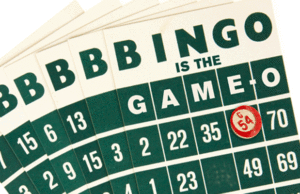
Let’s face it: Arkansans have this weird love/hate relationship with snow. Just the mention of a flake or two gets us all riled up and running for the nearest source of milk and bread. For me it’s cheese dip and salsa, but that’s not the point.
We hunker down and prepare to ride out whatever accumulation of whatever type of precipitation we might receive. Some embrace this “sort of” annual ritual with great excitement and anticipation: “Hey Ed, when’s it going to snow?” while others are a little more demanding: “Now Ed, I don’t want any snow this year.” I love it.
Regardless of how you feel as winter begins, chances are at some point before freezing temperatures and wintry precipitation end, you’ll hear someone say, “I’m ready for spring.”
But don’t be so hasty. If winter 2019 brings us snowfall, why not make the best of it? Of course, there’s sledding, building snow forts, snowball fights and making snow ice cream. Records of snow ice cream recipes date back to the second century B.C. with accounts of Alexander the Great consuming a mixture of snow, ice, honey and nectar.
From flavored snow cream to old-fashioned maple candy made in the snow, the white fluffy stuff gives us the opportunity to have some fun and create lasting memories that we don’t always get to enjoy in Arkansas.
But is it safe to eat? There are conflicting reports. According to a NPR report first published in January of 2015, as snow falls it collects pollutants such as black carbon, or soot, from the sky.
However, researchers have discovered that snow acts as a “scrubbing brush” of sorts for the atmosphere; so, the longer it snows, the lower the pollution levels. John Pomeroy, a scientist who studies water resources and climate change at the University of Saskatchewan, adds that even if you begin to collect snow as soon as it starts falling, contaminants in the snow are “all at levels well below toxic.”
If you decide to make snow ice cream, collect snow that has been falling for a while; don’t collect snow that has been on the ground for long periods of time, of course; avoid the “yellow snow;” and the “pink snow” can also pose a threat in the form of a rose-colored algae that can form in the snowdrift.
So far, winter of 2018/1019 has started out slowly in terms of snowfall, but there are expectations of a few very cold episodes that could lead to brief snow events into February. Our normal winter average is around 3-4 inches of snow, and this year may be a little less than that. Regardless, this is Arkansas, and we may get all that snow in one day or just a bit for a few days. Love it or hate it, it’s always a possibility even into late March. So use common sense about making snow cream, and bon appetit!










0 comments